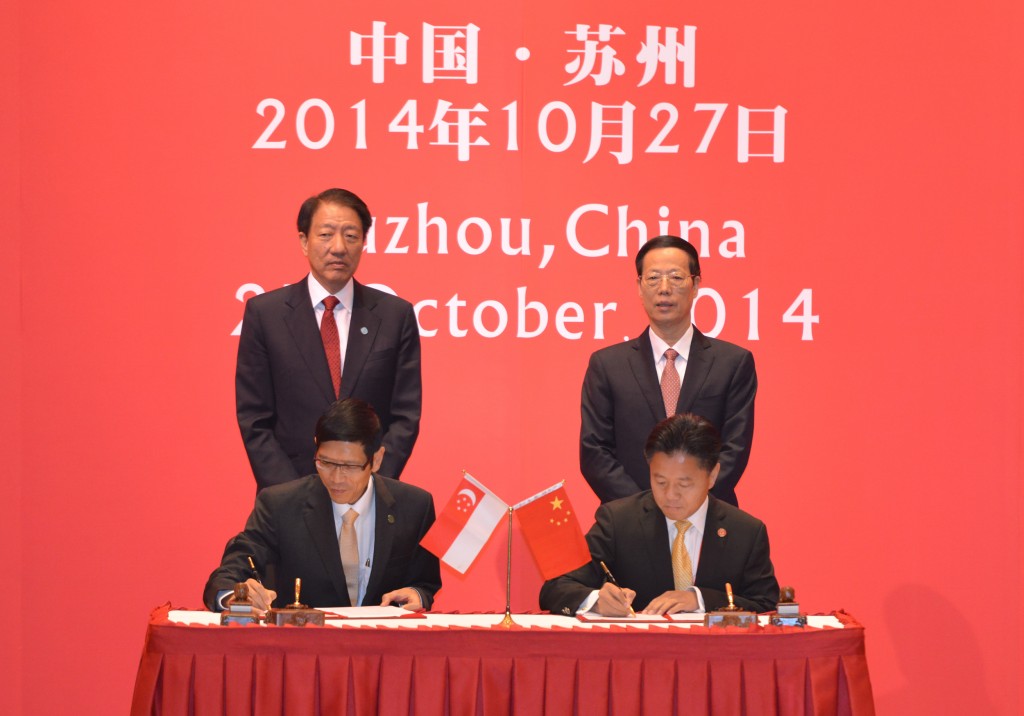Framework agreement signed between Suzhou Industrial Park Administrative Committee and National University of Singapore on deepening strategic collaboration
On 27 October 2014, the Singapore China Joint Co-operation Committee held its eleventh conference in Suzhou. The conference was co-chaired by Chinese Vice-Premier Zhang Gaoli and Singapore's Deputy Prime Minister Teo Chee Hean.

After the conference, Director of SIP Management Committee Yang Zhiping and NUS President Professor Tan Chorh Chuan signed a framework agreement to further deepen the strategic cooperation between the two parties. This milestone was witnessed by Vice Premier Zhang Gaoli and Minister Teo Chee Hean, respectively representing China and Singapore.

The SIP-NUS framework agreement, aiming to further deepen the strategic cooperation between the two parties and to build NUS Business School China Business Centre, Lee Kuan Yew School of Public Policy Suzhou Centre, and The IRES Global Logistic Properties Research Centre. These three new centers will focus their research on Business Management, Innovation and Social Management and Urban Development, as well as other aspects of China’s social development so as to contribute to China’s public policy, business and finance, and urban development. Hence, the agreement ushers in a new era of strengthened cooperation, most notably in the technological and cultural aspects of China and Singapore.
The NUS (Suzhou) Research Institute (NUSRI SZ) commenced its construction in 2010. It is the first research institute in China which is independently operated and managed by an overseas university. As of October 2014, NUSRI SZ has undertaken over 30 research projects, including nine national level projects. NUSRI SZ also incubates 14 start-ups and provided training to over 1000 participants.
NUSRI SZ is envisioned to be a fertile breeding ground for academic research of international standards, as well as for promoting academic exchanges between China and Singapore to spawn new opportunities for bilateral cooperation.




